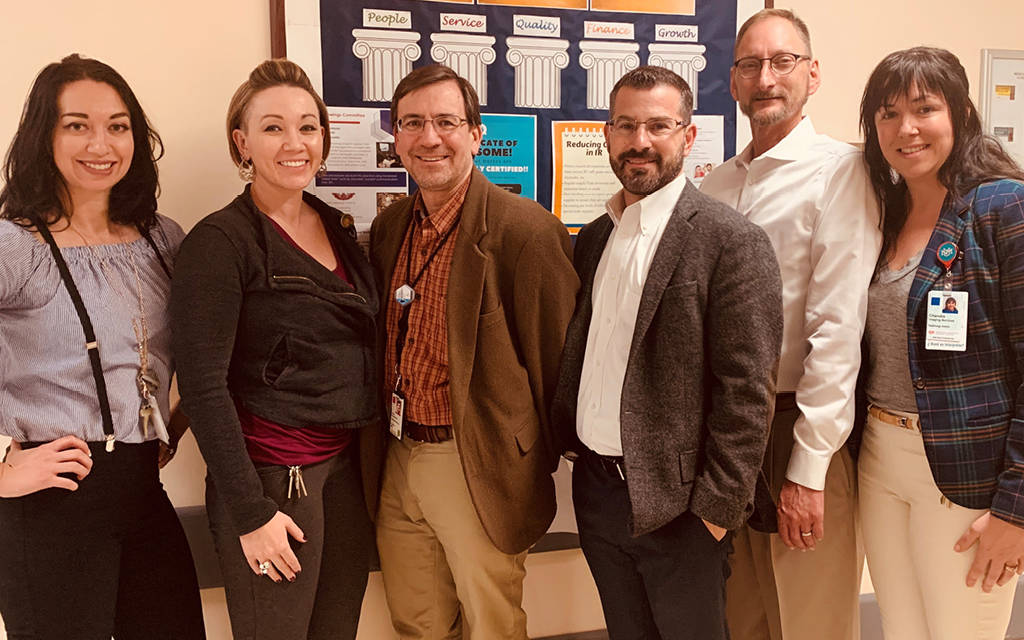As the American Society of Radiologic Technologists’ 100th anniversary approaches, the Bulletin is providing a forum for RTs going above and beyond for their patients and colleagues.
Recognizing the Need for a Quality Program
As the quality analyst for radiology at the University of New Mexico Hospital, closing the communication gap between RTs and radiologists is one of my key focus areas. Silos inhibit our ability to provide the best patient care, image quality, reporting, data analysis, and overall quality within the department. Of course, breaking down silos is not up to just one person. To help improve quality across the department, it is important to have the support of the entire leadership team. To accomplish this, we decided to build a comprehensive and inclusive quality and safety program. Several quality and safety teams within the radiology department support our efforts, including the MRI Safety Committee, the Quality and Safety Steering Committee, and the Quality and Safety Leadership Team. Each of these groups consists of RTs, registered nurses, radiologists, medical physicists, and imaging informatics specialists.
Growing Our Own
To create a quality and safety program, we needed a mission and principles to guide us. Two years ago, the Quality and Safety Steering Committee held its first annual radiology quality retreat — where we left campus to discuss which areas within radiology needed work. Our quality and safety program is now based on four principles: competence, evaluation, responsibility, and valuing quality and safety. Guided by these key principles, our goal is to ensure that all members of the radiology team understand their job functions, daily tasks, departmental policies and procedures, processes for problem-solving, and the importance of accurate and timely communication. This ensures that everyone has the tools and knowledge necessary to create an environment where quality and safety can grow. To continuously improve, we set realistic goals and identify and monitor quality and safety metrics to regularly evaluate our progress. By doing this, we can better understand trends, predict outcomes, and make data-driven decisions. A few of our monitoring tools include internal audits and inspections, simulations and drills, and observations. Additionally, it is critical that everyone takes personal ownership — including taking responsibility for system-wide issues and participating in correcting them, regardless of potential personal consequences.
Expanding From Improvement
Last year, we began to expand into quality subcommittees specific to each modality. We created the CT department’s “quality triad:” a radiologist section head, a lead physicist, and a group of lead RTs. During these meetings, we discussed image quality trends, protocol issues, dose monitoring trends, and current and future RT-led quality improvement projects specific to CT. These sub-groups invite frontline staff discussion and inclusion in our quality program — and provide radiologists and RTs with a non-confrontational environment where they can voice quality concerns, share ideas, and become more involved and aware of the quality improvement happening within their section.
After piloting this quality subcommittee for a year, we saw an overall improvement in team understanding between radiologists and RTs over the type of quality initiatives taking place, how quality initiatives help provide optimal patient care, and how radiology departments successfully complete a quality improvement project. Moving forward, we plan to implement quality subcommittees for other modalities in addition to CT.
it is critical that everyone takes personal ownership — including taking responsibility for system-wide issues and participating in correcting them, regardless of potential personal consequences.
Becoming Part of the Team
In our university hospital, we have 31 radiology residents on the team. Learning about quality and doing quality improvement projects within our radiology department is part of their curriculum. Historically, our radiology residents completed these projects by working with fellow residents and radiologists. The RTs and other clinical staff rarely knew what kind of projects were being done or what outcomes and improvements came from these projects. We identified this situation as another area where we could improve RT and radiologist collaboration and further align our mission of improving quality with the people who are learning and growing as part of our team.
Working with our radiology residency program director, we began to break down the silos by attending resident conferences and talking about our quality program, successful project implementations, current projects, and how residents can participate. Moving forward, we plan to use the Quality and Safety Steering Committee meeting as a venue for residents to bring their ideas for their own quality improvement projects. This will allow us to provide the tools, resources, and support they may need to complete their projects. Once their final projects are completed, our residents will present them to the Quality and Safety Committee. This will prepare them to incorporate quality improvement into their future careers and foster a multidisciplinary approach to quality-based patient care.
By creating a culture that empowers our radiologists and RTs to speak up, work together, and take control of their department’s own quality and safety processes, we have seen great improvements in error reduction, self-reporting, and overall ownership of quality and safety. The dedication and empathy of our entire team motivates each one of us to make our hospital a place where we can be proud to work — and proud to take care of our community

